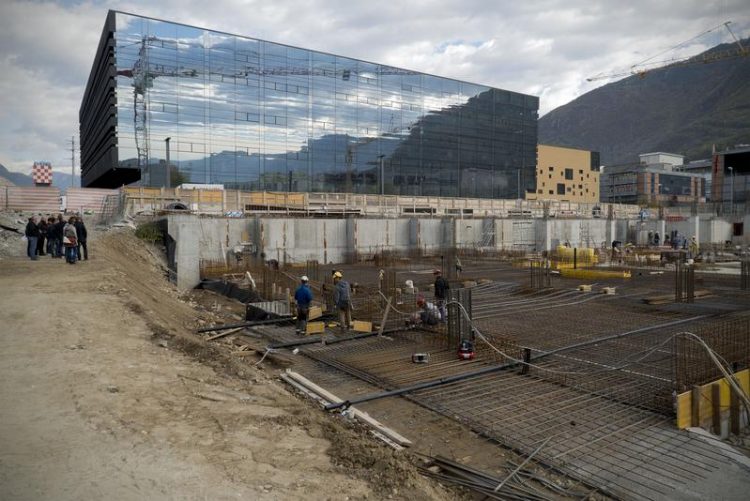365 days left until terraXcube: Next year, all of the world's environments will be in Bolzano/Bozen

Building site Eurac Research
Simulating wind, snow and extreme temperatures at an altitude of 9,000m in a controlled and secure environment represents a revolution in environmental simulation. And the ability to host up to 15 people in this environment for 45 days hails a new era of medical research.
All this will happen next year in terraXcube, Eurac Research’s new infrastructure in South Tyrol that is currently under construction in Bolzano/Bozen’s new technology park. The climatic conditions that terraXcube will be able to reproduce will also open up a new chapter for ecological studies, as well as a wide range of industrial testing opportunities. terraXcube will be unique in the world—a state-of-the-art infrastructure that welcomes local and European businesses.
The main climatic chamber, the Large Cube, has concrete walls as high as a two-story building and is 12-metres long. A van or a snowcat can comfortably enter through the four-metre-high sliding access door. In the basement, in the Small Cube, there are a further four concrete chambers with three-metre-long walls. Other workspaces include the outpatient clinic, laboratories, a workshop and the control room.
Such will be terraXcube a year from now: today it is a construction site. Although construction began this summer in the NOI Techpark area, the new technology park in Bolzano/Bozen, the idea of creating it was born six years ago. Stephan Ortner and Hermann Brugger of Eurac Research, the founding fathers of terraXcube, tell us how it happened:
“Studying human physiological responses to extreme altitudes and conditions is often challenging,” Brugger explained, recounting how last year an avalanche in the mountains of Cervinia nearly hit the location where he and his colleagues were conducting a study. But it is not only the threat of extreme events that jeopardises the outcome of our studies.
“To obtain reliable results, medical studies need precise, standardised and replicable conditions. That is why in 2011 we decided to create a simulator of extreme climatic conditions,” Brugger finishes. “The idea was brilliant, but we immediately realised that with the testing potential and the size of the rooms, we could not limit their use to research studies alone,” adds Ortner.
“It must become a complex and innovative infrastructure open to businesses that need to conduct top-level industrial testing. The timing was right because at the same time we began discussing the project, the Province was planning the construction of the NOI Techpark.”
Medical research and industrial testing are not the only domains of terraXcube activity. Eurac Research ecologists will place grass and plants in the Small Cube to replicate in-vitro the open-air laboratory that they have been operating for years in the Venosta Valley.
“That way we will be able to surpass the limits of environmental simulation in the lab and study with more accuracy the effects of climate change and extreme climatic events on plants and biodiversity,” says Eurac Research president Roland Psenner. This subject, in fact, has attracted the interest of the Italian Ministry of the Environment, who are following the development of the infrastructure as an outside observer.
Media Contact
All latest news from the category: Earth Sciences
Earth Sciences (also referred to as Geosciences), which deals with basic issues surrounding our planet, plays a vital role in the area of energy and raw materials supply.
Earth Sciences comprises subjects such as geology, geography, geological informatics, paleontology, mineralogy, petrography, crystallography, geophysics, geodesy, glaciology, cartography, photogrammetry, meteorology and seismology, early-warning systems, earthquake research and polar research.
Newest articles

NASA: Mystery of life’s handedness deepens
The mystery of why life uses molecules with specific orientations has deepened with a NASA-funded discovery that RNA — a key molecule thought to have potentially held the instructions for…

What are the effects of historic lithium mining on water quality?
Study reveals low levels of common contaminants but high levels of other elements in waters associated with an abandoned lithium mine. Lithium ore and mining waste from a historic lithium…

Quantum-inspired design boosts efficiency of heat-to-electricity conversion
Rice engineers take unconventional route to improving thermophotovoltaic systems. Researchers at Rice University have found a new way to improve a key element of thermophotovoltaic (TPV) systems, which convert heat…



